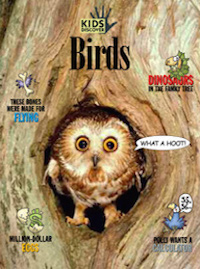 Many children love imitating the telltale call of the owl – whoo, whoo! The popularity of these beautiful birds of prey is evident in their appearance in many children’s books and movies (Harry Potter, Winnie the Pooh and the Guardians of Ga’Hoole, to name a few). But what do we really know about owls?
Many children love imitating the telltale call of the owl – whoo, whoo! The popularity of these beautiful birds of prey is evident in their appearance in many children’s books and movies (Harry Potter, Winnie the Pooh and the Guardians of Ga’Hoole, to name a few). But what do we really know about owls?
Fun Facts about Owls
Owls can be found in most parts of the world, with the exception of Antarctica. A group of owls is called a parliament, but not all owls live in groups; many are solitary creatures, meaning they live by themselves. Baby owls are called owlets.
While there are over 200 different species of owls, some are more popular than others. And although many photos would have you believe that all owls live in trees, that’s not the case. Owls reside in many types of habitats. Snowy Owls live on the frozen tundra, Barn Owls live near grasslands, the Burrowing Owl makes his home underground in holes dug by other animals and the Great Gray Owl calls the forest home.
Features Common to All Owls
While owls can be found awake during the day, most are nocturnal animals (which mean they usually sleep during the day and are awake at night). Owls are carnivores – they eat small rodents and animals. They hunt for their food in the shadows of dusk and dark. Owls have sharp claws or talons on their feet, strong legs and curved beaks.
Did you also know that owls are farsighted? This means they aren’t able to see things close to their eyes clearly but have excellent vision from a distance. So they are able to spot small animals from high in the air. Owls also have a keen sense of hearing and are silent flyers which make them excellent hunters.
Owls are famous for their ability to twist their heads to be able to see behind them — kids love to imitate owls in this manner. But can they really turn their head all the way around? Not quite – an owl is able to turn its head 270 degrees (a full circle would be 360 degrees).
Why is an owl able to turn its head so far around? First, an owl is unable to move their eyes within their sockets. So in order to see something next to them, they must turn their head. And owl’s neck also has a unique structure. There are 14 vertebrae in an owl’s neck while humans only have 7 vertebrae. These extra bones plus specific placement of the owl’s arteries allow their necks to move more freely than yours or mine.
Viewing Owls
While many owls are very stealth, you may have the chance to see an owl in its natural habitat. During a recent trip to the Rocky Mountains, our family was lucky to have a Great Horned Owl residing in one of the large pine trees near our rental home! We were able to find him in the early evening perched on a high branch and see him fly off for his nightly adventures.
You might listen for those infamous owl calls in your neighborhood or at a local park. Some owls make a distinct ‘whoo, whoo’ sound while other owl calls will sound like a loud screech or clicking.
Another popular location for viewing owls is one of your local nature centers. Since owls are native to many areas, nature centers and animal sanctuaries will take in injured owls to help them recover. Check with your city, county or state nature facilities to see if any are home to owls in your area.
Favorite Owl Books
As I mentioned earlier, owls are very popular animals in the literary world, and children love to learn about owls. For enjoyable reads about owls, try these picture books: Owl Babies by Martin Waddell, Owl Moon by Jane Yolen, and Little Hoot by Amy Krouse Rosenthal. Gail Gibbons also authored a wonderful nonfiction book titled Owls that shares all kinds of tidbits and facts.
Older kids will enjoy these chapter books: Owls in the Family by Farley Mowat, Hoot by Carl Hiaasen, and Guardians of Ga’Hoole series by Kathryn Lasky.



